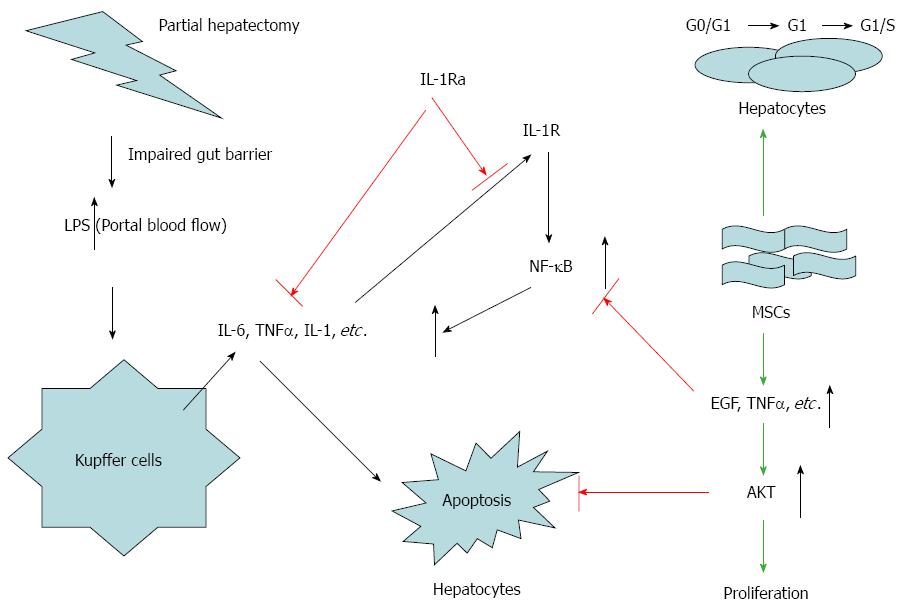Copyright
©The Author(s) 2016.
World J Gastroenterol. Apr 28, 2016; 22(16): 4120-4135
Published online Apr 28, 2016. doi: 10.3748/wjg.v22.i16.4120
Published online Apr 28, 2016. doi: 10.3748/wjg.v22.i16.4120
Figure 11 Schematic illustrating the proposed dual mechanism of action of combination therapy.
(1) Inhibition of NF-κB leads to decreased IL-1, IL-6, and TNF-α expression, which appears to be the central mechanism by which IL-1Ra combines with MSC transplantation to promote regeneration of liver cells. (2) Upregulation of Akt expression due to EGF and TGF-α growth factors induces hepatocyte survival, DNA synthesis, and cell division. Cytokines, including IL-1, IL-6, and TNF-α, are secreted by nonparenchymal cells, such as Kupffer cells and sinusoidal epithelial cells, following hepatectomy. Exogenous IL-1Ra blocks IL-1R, reducing proinflammatory mediators, and enhancing MSC transplantation efficiency. This benefits initial priming of hepatocytes, with the transition of quiescent hepatocytes from the G0 to G1 stage of the cell cycle. Effective MSC transplantation may induce upregulation of growth factors such as hepatocyte growth factor, EGF and TGF-α, which promote Akt signaling pathways, producing an antiapoptotic effect and benefiting liver regeneration. Akt: Protein kinase B; EGF: Epidermal growth factor; IL: Interleukin; IL-1Ra: IL-1 receptor antagonist; MSC: Mesenchymal stem cell transplantation; NF-κB: Nuclear factor κB; TGF: Transforming growth factor; TNF: Tumor necrosis factor.
- Citation: Sang JF, Shi XL, Han B, Huang X, Huang T, Ren HZ, Ding YT. Combined mesenchymal stem cell transplantation and interleukin-1 receptor antagonism after partial hepatectomy. World J Gastroenterol 2016; 22(16): 4120-4135
- URL: https://www.wjgnet.com/1007-9327/full/v22/i16/4120.htm
- DOI: https://dx.doi.org/10.3748/wjg.v22.i16.4120









